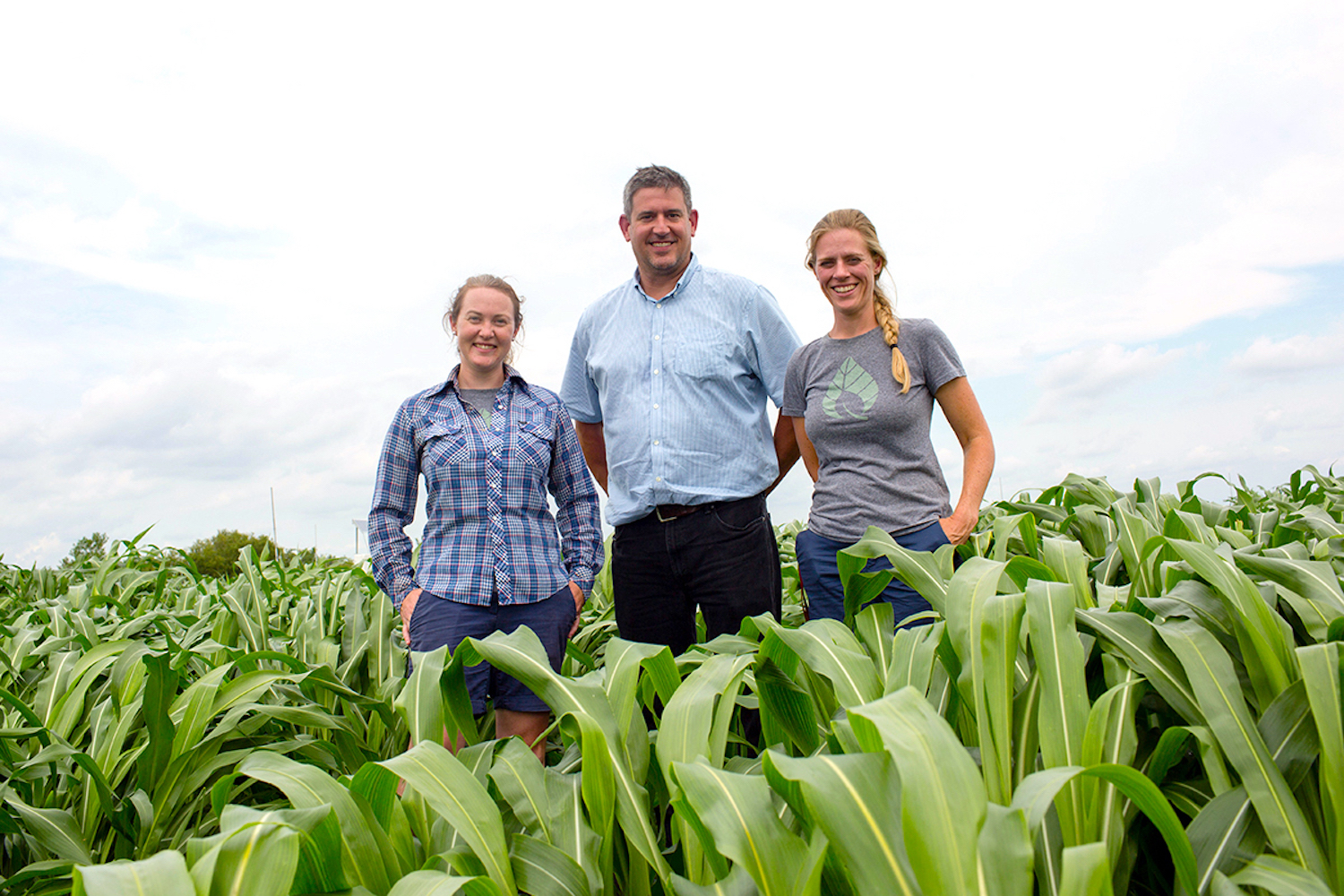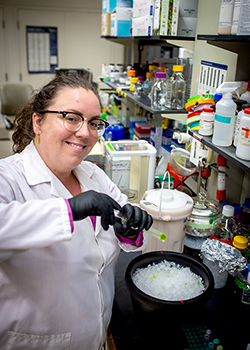Not just CO2: Rising temperatures also alter photosynthesis in a changing climate

CHAMPAIGN, Ill. — Agricultural scientists who study climate change often focus on how increasing atmospheric carbon dioxide levels will affect crop yields. But rising temperatures are likely to complicate the picture, researchers report in a new review of the topic.
Published in the Journal of Experimental Botany, the review explores how higher temperatures influence plant growth and viability despite the greater availability of atmospheric CO2, a key component of photosynthesis. Excessive heat can reduce the efficiency of enzymes that drive photosynthesis and can hinder plants’ ability to regulate CO2 uptake and water loss, the researchers write. Structural features can make plants more – or less – susceptible to heat stress. Ecosystem attributes – such as the size and density of plants, the arrangement of leaves on plants or local atmospheric conditions – also influence how heat will affect crop yields.
The review describes the latest scientific efforts to address these challenges.

“It’s important to have an understanding of these issues across scales – from the biochemistry of individual leaves to ecosystem-level influences – in order to really tackle these problems in an informed way,” said lead author Caitlin Moore, a research fellow at the University of Western Australia and an affiliate research fellow at the Institute for Sustainability, Energy, and Environment at the University of Illinois Urbana-Champaign. Moore led the review with Amanda Cavanagh, another U. of I. alumna now at the University of Essex in the U.K.

Photo by Claire Benjamin/RIPE project
“Historically, there’s been a lot of focus on rising CO2 and the impact that it has on plants,” said co-author Carl Bernacchi, a professor of plant biology and of crop sciences and an affiliate of the Carl R. Woese Institute for Genomic Biology at the U. of I. “And it is an important factor, because we are changing that carbon dioxide concentration enormously. But it’s a small part of the bigger story. Once you throw changing temperatures into the mix, it completely messes up our understanding of how plants are going to respond.”
“Take Rubisco, the key enzyme that fixes carbon dioxide into sugars, making life on Earth possible,” Cavanagh said. “Rubisco speeds up as the temperature increases, but it’s also prone to making mistakes.”
Instead of fixing carbon dioxide by binding it to sugars, a key step in photosynthesis, Rubisco sometimes fixes oxygen, initiating a different pathway that wastes a plant’s resources. Higher temperatures make this more likely, Cavanagh said. At even higher temperatures, the enzyme will begin to lose its structural integrity, making it ineffective.
Excessive heat can also undermine a plant’s reproductive output. Other heat-sensitive enzymes are essential to the light-harvesting machinery of plants or play a role in moving sugars to different plant tissues, allowing the plant to grow and produce grains or fruits.

“If these little molecular machines are pushed out of the temperature range that’s optimal, then they can’t do their job,” Cavanagh said.
When temperatures rise too high, plant leaves open the pores on their surfaces, called stomata, to cool themselves. Stomata also allow plants to absorb carbon dioxide from the atmosphere, but when they’re fully open, the leaf can lose too much moisture.
“Temperature affects the atmosphere above the plant,” Moore said. “As the atmosphere heats up, it can hold additional water, so it’s pulling more water from the plants.”
Scientists at Illinois and elsewhere are looking for ways to enhance crop plants’ resilience in the face of these changes. Moore, whose work focuses on ecosystem-scale factors, said new tools that can help screen plants on a large scale are essential to that effort. For example, satellites that can detect changes in chlorophyll fluorescence in plants can indicate whether a crop is under heat stress. These changes in fluorescence are detectable before the plant shows any outward sign of heat stress – such as their leaves turning brown. Developing these tools may enable farmers to respond more quickly to crop stress before too much damage is done.
Cavanagh, who studies the molecular biology and physiology of plants, said some plants are more heat tolerant than others, and scientists are searching their genomes for clues to their success.

“For example, you can look at wild Australian relatives of rice that are growing in much harsher climates than most paddy rices,” she said. “And you see that their enzymes are primed to work more efficiently at hotter temperatures.”
One goal is to transfer heat-tolerant genes to cultivated rice varieties that are more susceptible to heat stress.
Other strategies include engineering structures that pump more CO2 to the site of carbon fixation to improve Rubisco efficiency; altering the light-gathering properties of leaves at the tops and bottoms of plants to even out distribution of sunlight and maintain moisture levels; and changing the density of stomata to improve their control of CO2 influx and moisture loss.
Collaboration between scientists focused on different scales of ecosystem and plant function – from the atmospheric to the molecular – is essential to the success of efforts to build resilience in crop plants, the researchers said.
“The world is getting hotter at a shocking rate,” Cavanagh said. “And we know from global models that each increase in gross temperature degree Celsius can cause 3% to 7% losses in yield of our four main crops. So, it’s not something we can ignore.
“What makes me optimistic is the realization that so much work is going into globally solving this problem,” she said.
Editor's notes:
Cavanagh and Bernacchi are affiliates of the Realizing Increased Photosynthetic Efficiency project at the U. of I. Moore also is an affiliate of the Center for Advanced Bioenergy and Bioproducts Innovation at Illinois. Bernacchi is a research plant physiologist for the U.S. Department of Agriculture, Agricultural Research Service.
To reach Carl Bernacchi, email bernacch@illinois.edubernacch@illinois.edu.
To reach Amanda Cavanagh, email a.cavanagh@essex.ac.uk.
To reach Caitlin Moore, email caitlin.moore@uwa.edu.au.
The paper “The effect of increasing temperature on crop photosynthesis: From enzymes to ecosystems” is available online and from the U. of I. News Bureau.
DOI: 10.1093/jxb/erab090
By: Diana Yates || Illinois News Bureau
